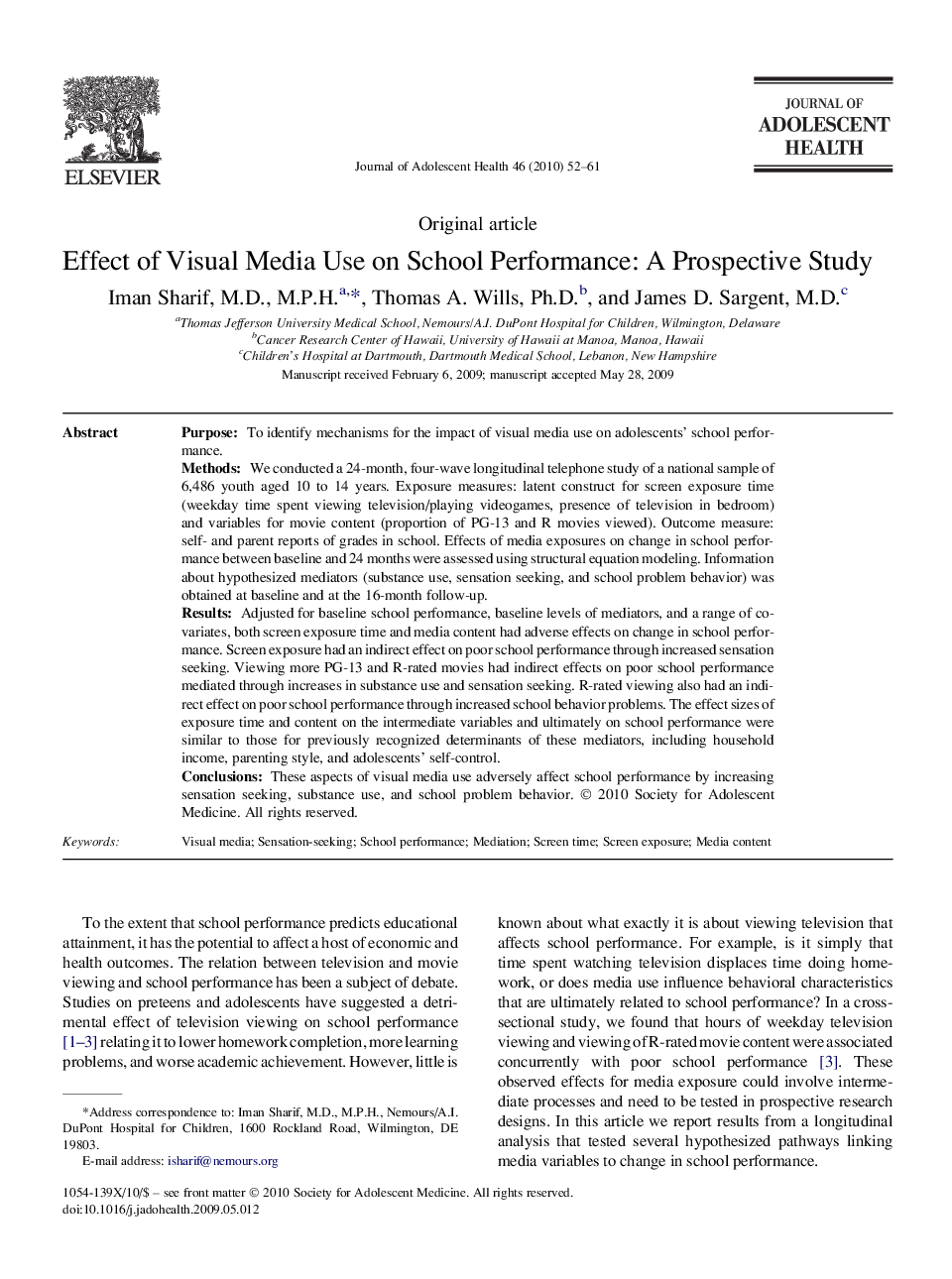| Article ID | Journal | Published Year | Pages | File Type |
|---|---|---|---|---|
| 1080097 | Journal of Adolescent Health | 2010 | 10 Pages |
PurposeTo identify mechanisms for the impact of visual media use on adolescents' school performance.MethodsWe conducted a 24-month, four-wave longitudinal telephone study of a national sample of 6,486 youth aged 10 to 14 years. Exposure measures: latent construct for screen exposure time (weekday time spent viewing television/playing videogames, presence of television in bedroom) and variables for movie content (proportion of PG-13 and R movies viewed). Outcome measure: self- and parent reports of grades in school. Effects of media exposures on change in school performance between baseline and 24 months were assessed using structural equation modeling. Information about hypothesized mediators (substance use, sensation seeking, and school problem behavior) was obtained at baseline and at the 16-month follow-up.ResultsAdjusted for baseline school performance, baseline levels of mediators, and a range of covariates, both screen exposure time and media content had adverse effects on change in school performance. Screen exposure had an indirect effect on poor school performance through increased sensation seeking. Viewing more PG-13 and R-rated movies had indirect effects on poor school performance mediated through increases in substance use and sensation seeking. R-rated viewing also had an indirect effect on poor school performance through increased school behavior problems. The effect sizes of exposure time and content on the intermediate variables and ultimately on school performance were similar to those for previously recognized determinants of these mediators, including household income, parenting style, and adolescents' self-control.ConclusionsThese aspects of visual media use adversely affect school performance by increasing sensation seeking, substance use, and school problem behavior.
